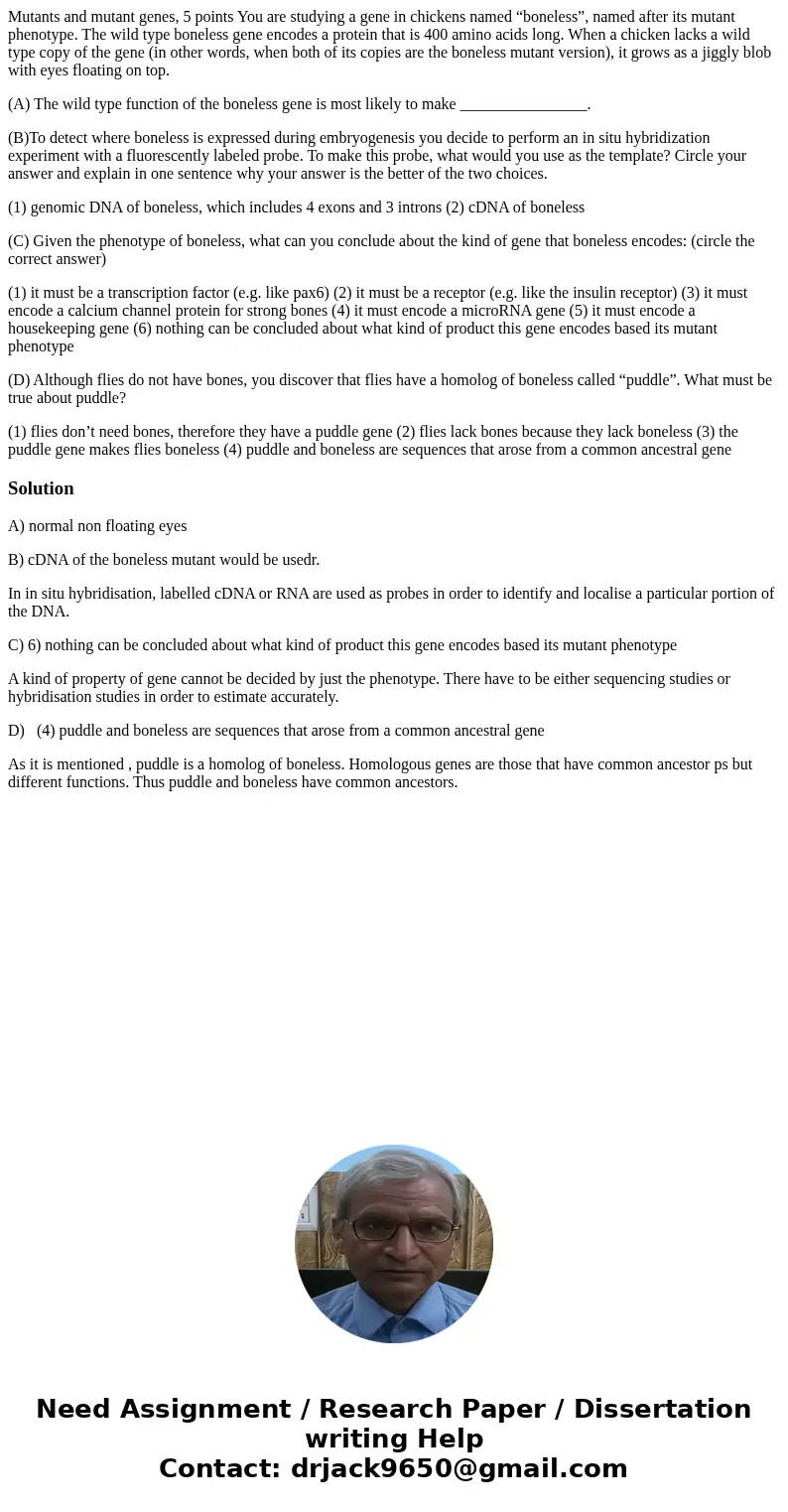Mutants and mutant genes 5 points You are studying a gene in
Mutants and mutant genes, 5 points You are studying a gene in chickens named “boneless”, named after its mutant phenotype. The wild type boneless gene encodes a protein that is 400 amino acids long. When a chicken lacks a wild type copy of the gene (in other words, when both of its copies are the boneless mutant version), it grows as a jiggly blob with eyes floating on top.
(A) The wild type function of the boneless gene is most likely to make ________________.
(B)To detect where boneless is expressed during embryogenesis you decide to perform an in situ hybridization experiment with a fluorescently labeled probe. To make this probe, what would you use as the template? Circle your answer and explain in one sentence why your answer is the better of the two choices.
(1) genomic DNA of boneless, which includes 4 exons and 3 introns (2) cDNA of boneless
(C) Given the phenotype of boneless, what can you conclude about the kind of gene that boneless encodes: (circle the correct answer)
(1) it must be a transcription factor (e.g. like pax6) (2) it must be a receptor (e.g. like the insulin receptor) (3) it must encode a calcium channel protein for strong bones (4) it must encode a microRNA gene (5) it must encode a housekeeping gene (6) nothing can be concluded about what kind of product this gene encodes based its mutant phenotype
(D) Although flies do not have bones, you discover that flies have a homolog of boneless called “puddle”. What must be true about puddle?
(1) flies don’t need bones, therefore they have a puddle gene (2) flies lack bones because they lack boneless (3) the puddle gene makes flies boneless (4) puddle and boneless are sequences that arose from a common ancestral gene
Solution
A) normal non floating eyes
B) cDNA of the boneless mutant would be usedr.
In in situ hybridisation, labelled cDNA or RNA are used as probes in order to identify and localise a particular portion of the DNA.
C) 6) nothing can be concluded about what kind of product this gene encodes based its mutant phenotype
A kind of property of gene cannot be decided by just the phenotype. There have to be either sequencing studies or hybridisation studies in order to estimate accurately.
D) (4) puddle and boneless are sequences that arose from a common ancestral gene
As it is mentioned , puddle is a homolog of boneless. Homologous genes are those that have common ancestor ps but different functions. Thus puddle and boneless have common ancestors.

 Homework Sourse
Homework Sourse